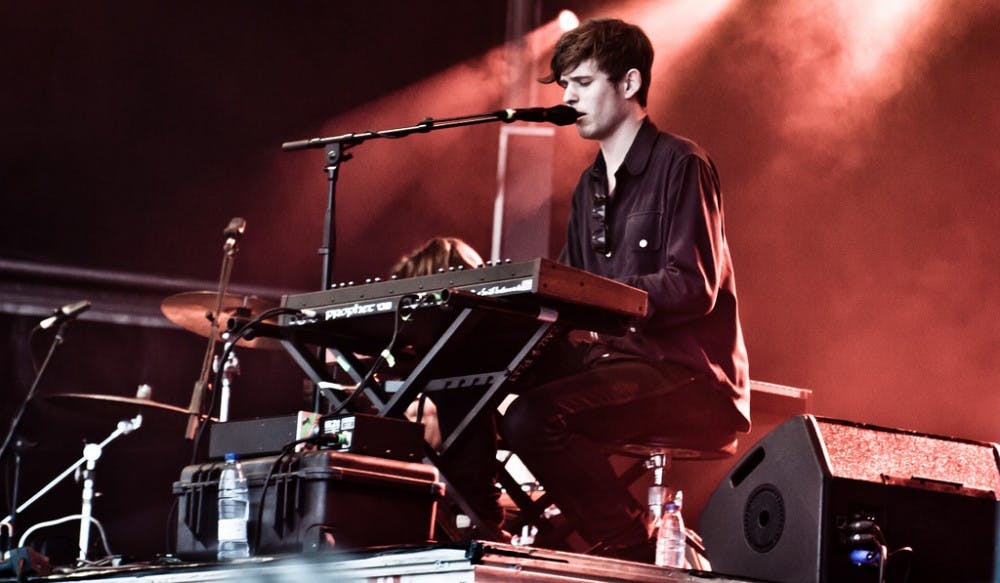James Blake makes good music. He’s been making good music for a long time. His first track, released back in 2009, “Air and Lack Thereof,” was a slapping dance song that he made in his bedroom. Since then the quiet, London-based producer dropped three fantastic albums, won the Mercury Prize and became one of the most sought after song writers, collaborating with pop icons such as Kanye West, Beyoncé and Frank Ocean. Blake is known for being your favorite artist’s favorite artist.
Assume Form is the perfect title for his new project. Blake’s music has always been ethereal and subtle. His early music was an experimentally constructed sound collage, in which his vocals were used as accents to fill the atmosphere. On Assume Form, it feels like Blake has materialized. He is no longer the quiet, reserved producer, fiddling with settings and hiding behind layers of reverb. He’s front and center.
This album was recorded after Blake moved from London to Los Angeles. You can hear it in the music. The bleak, foggy atmosphere of his last project, The Colour in Anything, is replaced by tight, synthetic production. This album sounds Expensive with a capital E. There is so much pure sound packed into every second. Even moments of silence sound meticulously produced.
The songs on this project are far more structured than anything Blake has ever done before. Where in the past, Blake would find a weird effect or loop and work incredibly hard to scaffold a song around that motif, he focuses on pure singing and songwriting here. Blake’s voice is the centerpiece. He comfortably belts out melodies and beautiful vocal runs.
The experimental production isn’t gone though, Blake has just moved it to the background. Glitches ripple through the electronics in the back. Weird drum rhythms weave in and out. The vocal harmonies get absolutely caked in reverb, autotune and dozens of other effects. (I would love to see James Blake’s bill for Ableton plug-ins.)
One of the most surprising songs on this project is “Mile High.” The track starts like any other Travis Scott song. The beat is classic Metro — washy synths over pulsing 808s. (I had to check if I was still playing the right project.) A few moments in, Blake hijacks the track. The song morphs from a standard trap track into a sweet melodic tune. It is hilarious to imagine the twee British producer/singer working on this delicate duet with uber-famous trap-rapper Travis Scott. It’s also exciting to see an artist outside of the trap genre use trap elements so successfully, especially since those elements are getting played out in the mainstream.
That isn’t the only great duet on the project. On “Barefoot in the Park,” Blake trades verses with the incredibly talented ROSALÍA, who manages to toe the line between a Spanish power-vocalist and a throaty indie singer. The way that the two voices coil around each other is gorgeous. I know for a fact that this song will be used in one of those cheesy romantic movies within the next few months. I can already picture the scene: Two skinny characters twirling around each other in the snow or in a field with cuts to close-ups on their exaggeratedly smiling faces.
Want to hear something wild? Come close. Closer, I’ll whisper it: I don’t like the track with André 3000 on it. There. I said it. The song, “Where’s the Catch?” doesn’t... flow well, I guess? The issue isn’t totally clear. Every part just seems haphazardly slapped together — the twinkling banjo-sounding sample, the four on the floor kick and some of Blake’s weakest melodic work. The André verse is (as per usual) great, but it feels unnecessary, as if it was added just to have (feat. André 3000) on the tracklisting.
The highlights on this project are moments of ethereal, delicate beauty. The dramatic, climactic resolution of “I’ll Come Too,” with the rising string harmonies, the eerie vocal loop and Blake’s melodic line, feels almost painfully sweet. Moses Sumney’s gorgeous run where he switches to his throaty falsetto at the beginning of “Tell Them” is immediate goosebump material. Finally, there is nothing more touching and sweet than the pulsating, dense choral conclusion to “Lullaby for My Insomniac.” It’s the perfect ending to the tape.
Do I wish that this album was more experimental? Yes. But that’s because I’m a weird music guy who wants every musician to make weird music so that I can talk about it with my weird music friends. I was secretly hoping for more songs like “If the Car Beside You Moves Ahead,” a loosie Blake dropped last year with stuttering, chopped vocal riffs, because it is a fantastic track with a completely baffling structure.
Blake did the exact opposite and still managed to create a phenomenal project. He found a way to make his unorthodox sound more accessible, while filling his music with a broader spectrum of emotions. By consistently making this quality of music, Blake continues to hold the crown in the electro-indie-pop genre that he helped create.





